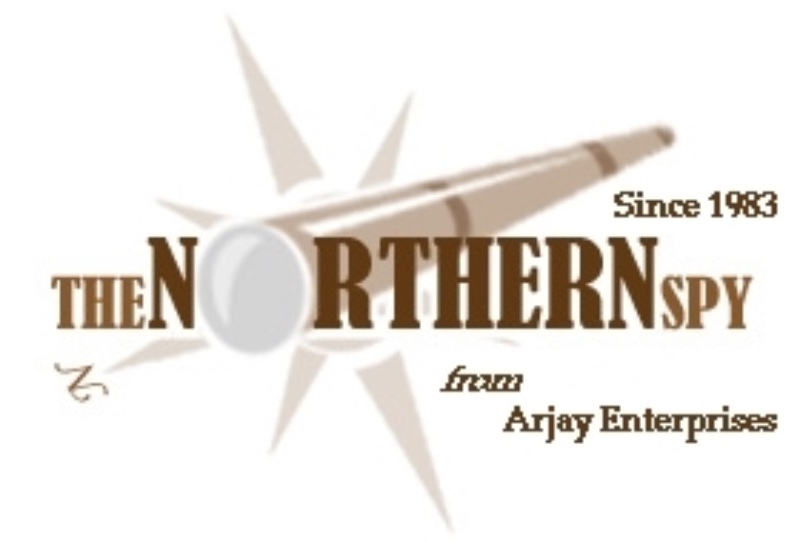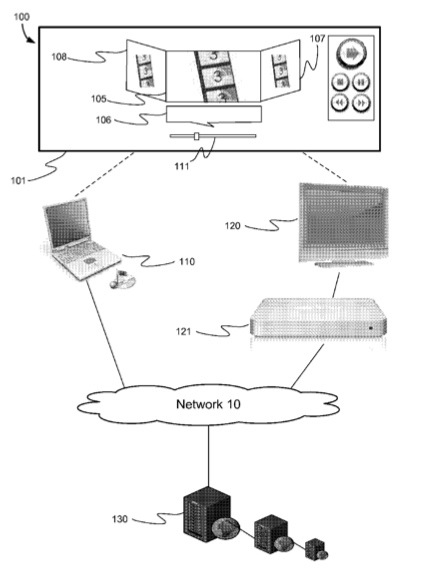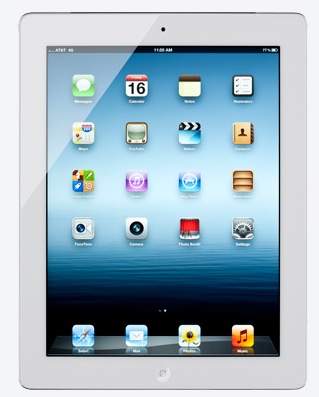By Rick Sutcliffe
Apple’s latest iterations are anything but Halloween scary, much less insanely great. Rather they are mere steps along an already well-worn path of mediocrity–by dint of a loyal installed base temporarily insanely profitable in a strictly stock value-enhancing way, but not industry-leading in any sense. Consider:
Phones
The Spy opined on these last month. Apple tweaked its line somewhat, but debuted no groundbreaking technologies in either hardware or software. Apple is barely keeping pace with the rest of the smartphone industry, and is relying for sales on its installed base to upgrade. The Spy has a 6+, and finds no compelling reason to do so.
True, it will not run the iOS 12.1 video FaceTime, but he has no foreseeable compelling use case for such a feature. Some will, and it’s a tiny step toward the PIEA (Personal Intelligence Enhancing Appliance) that he incorporated into his fiction sixteen years ago. That level of Metalibrary access now seems a receding goal in the face of the more-better-faster feature-rich but innovation poor environment the smartphone world has become.
iPad Pro
Once upon a time there was no tablet market, there was only an iPad market. That technology leadership has long been surrendered. Consider what features are being touted: thinner, larger display, USB-C instead of lightning connector (so it can charge a phone), rechargeable pencil, no headphone jack or home button, and rounded corners.
And this package of minor incremental changes (whether they are all improvements is debatable) is touted as the biggest change to the line since its inception. Really?
Pads are a multiple niche product. They could be indispensable in such applications as on-the-spot inventory, price checking and scanning, entering medical information on hospital rounds, note taking and data entry for later processing at central repositories, and the like. And (one should not really begin a sentence with a conjunction, but life and writing sometimes needs some spice) for users with very modest needs, a Pad can substitute for a laptop if the user can connect it at her desk to a keyboard, screen, and supplementary storage–something the USB connector makes fairly easy.
One could argue that most users’ everyday needs are modest, but that argument would not cut it for the desk slave chained to her word processing or financial spreadsheets who wants storage, screen space, a real keyboard and at least some processing power in her take-homeable package, or for the gamer-addict who consumes more CPU cycles and bandwidth than he breathes oxygen molecules. So perhaps a few people will buy this as a very low end entry level computer, but…
MacBookAir
This is a product with which the Spy has always had difficulty discerning a use. It’s a Mac, but its niche seems the same as an iPad but with the addition of a keyboard, which in the Pad arena is an encumbrance. It’s under three pounds, (who uses pounds any more?) made out of recycled aluminum, has what can only be an improved keyboard (Apple hasn’t has a good track record with those lately) and no TouchBar (does anyone really care about that “feature”?)
So, it sits as a minimal ultra-portable computer with a little better power than a Pad and tries to satisfy slightly more robust needs, yet can only be seen as a stripped down and scarcely less expensive MacBook. People apparently buy them or Apple would have deep-sixed them by now, but the Spy has no place even in his alternate universe for such a device, especially at the new and higher price point.
Mac mini
Here’s another niche product–a minimalist desktop computer to which one can attach anything she likes–oh, items like a screen and keyboard, for instance. This one has a niche, though not a large one. It’s designed for the user of modest needs who does not need portability but is content with a simple desk machine that has very modest (albeit improved) potential expandability.
It seems to the Spy though, that if there was a robust market for the mini, Apple would have updated it at least once in the last four years. Still, he might buy one for his wife, whose aging G5 MacPro can’t run much modern software (she uses it for mail) and will soon have to take up permanent residence in the electronic necropolis. After all the new Mini has a quad or six core processor and four USB-C ports, so is useable.
Apple claims it is five times as fast as the old model, but that wouldn’t have been hard to achieve, now would it? Of these products mentioned so far, the Mini has seen by far the most significant upgrade. Perhaps Apple’s loyal marketplace will now forgive Apple’s neglect of this line. Perhaps the upgrade was done more out of embarrassment and necessity than in any desire for innovation. Some people will buy it.
Professional computing
These modest product iterations (much more was necessary for the mini if Apple were to keep selling it) do keep minimal skin in several games, but fail to signpost any new technological paths, as most Apple introductions once did. Moreover, they offer nothing for the professional computist, as the Mac Pro line still languishes in the backroom labs from which it may never emerge.
After all, that market has been frittered away ever since the light-selling “trash can” Pro replaced the more popular “cheese grater” towers lo these many tech lifetimes ago. Does it really take this long to produce something heavy-duty users will find compelling? Or, is Apple dithering in indecision over whether to abandon the market segment that once could easily believe its products were indeed insanely great? The longer the delay, the more likely the latter seems.
This brings us to Mojave which the Spy has yet to install. Oh, he will–eventually, and in stages. See, he could get by just using his portable. So if he installed it only on his 2010 era cheese grater tower desktop first and it bombed, he could manage. But the portable definitely does not get the first upgrade. He’s no longer an early tech adopter, but a cautious and conservative old geezer whose work flow is dependent on a 100% reliable machine day in and day out. (No; make that minute in and minute out these days. A whole day’s activities being discussed in one breath–impossible.)
So the cheesy machine gets Mojave first–on a separate drive from the oner containing the current boot partition. However, (there’s always one of those), the graphics card in this 2010 fellow geezer does not support Metal, Apple’s graphic output software, without with Mojave will not even install, much less run. Said card is also showing warning signs of failure.
By the way, before even considering an OS upgrade, one should always run the installer of the current OS, in case it finds a new firmware upgrade. The next OS may not be able to install without it, and depending on the graphics card, may not be able to tell you it needs to fetch and install it, provided it has your approval.
Is it worth springing a few hundred loonies on a new graphics card to squeeze two or three more years of life out of this old powerhouse while awaiting something better from Apple? The Spy thinks so, and bought the Sapphire Nitro+ 580 *GD5special edition card, which is supposedly Metal compatible except that the early boot sequence where one can choose a boot disk does not appear because it lacks an Apple ROM.
Yes, yes, gamers and miners buy it for its processor, but the Spy likes to run multiple monitors, so needs a little power. Nothing to report on it or on Mojave as a first install only awaits the arrival of a Y-cable for the card that was ordered at the same time, but has already taken a week longer to arrive. Much more on this adventure next time.
–The Northern Spy
Opinions expressed here are entirely the author’s own, and no endorsement is implied by any community or organization to which he may be attached. Rick Sutcliffe, (a. k. a. The Northern Spy) is professor of Computing Science and Mathematics, Dean of Science and Chair of the University Senate at Canada’s Trinity Western University. He has been involved as a member of or consultant with the boards of several organizations, and participated in developing industry standards at the national and international level. He is a co-author of the Modula-2 programming language R10 dialect. He is a long time technology author and has written two textbooks and ten alternate history SF novels, one named best ePublished SF novel for 2003. His articles, columns, and papers have appeared in numerous magazines, newspapers, and journals (dead-tree and online), and he’s a regular speaker at churches, schools, academic meetings, and conferences. He and his wife Joyce have lived in the Aldergrove/Bradner area of B.C. since 1972.
URLs for Rick Sutcliffe’s Arjay Enterprises:
The Northern Spy Home Page: http: //www. TheNorthernSpy. com
opundo : http: //opundo. com
Sheaves Christian Resources : http: //sheaves. org
WebNameHost : http: //www. WebNameHost. net
WebNameSource : http: //www. WebNameSource. net
nameman : http: //nameman. net
General URLs for Rick Sutcliffe’s Books:
Author Site: http: //www. arjay. ca
Publisher’s Site: http: //www. writers-exchange. com/Richard-Sutcliffe. html
The Fourth Civilization–Ethics, Society, and Technology (4th 2003 ed. ): http: //www. arjay. bc. ca/EthTech/Text/index. html
*** Paladin on Amazon ***
Author Site: https://www.amazon.ca/dp/B07FXML8ZW?tag=geolinkerca-20
URLs for items mentioned in this column
Sapphire Card:: http://www.sapphiretech.com/productdetial.asp?pid=3891952B-0F89-44B0-A39E-E911C8B689F9&lang=eng





